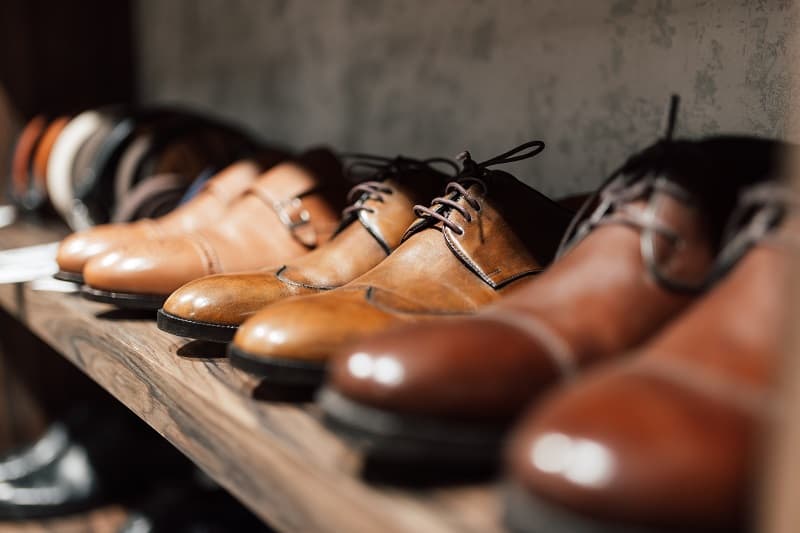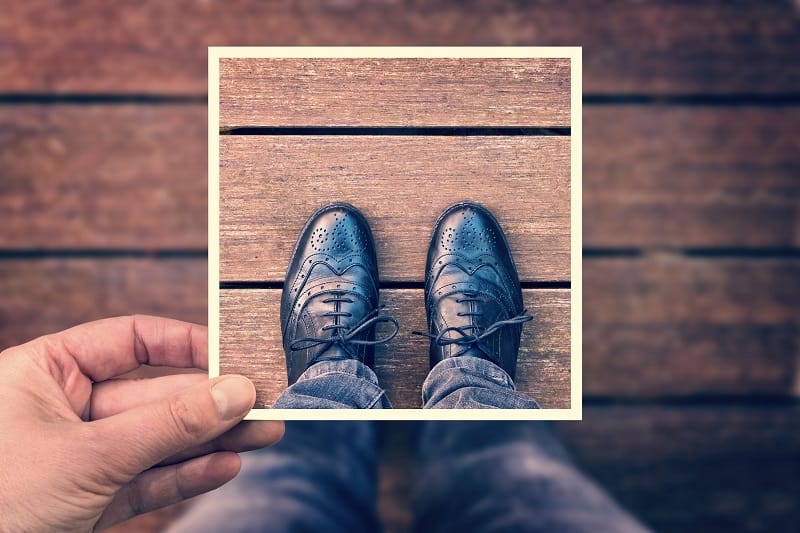
Blucher vs. Derby: Everything You Need To Know
Dress shoes may all look the same, but there are actually a wide variety of styles when it comes to footwear for smart casual, semi-formal, and formal occasions. While you’ve likely heard of Oxfords and brogues, there are a few other similar styles that differ slightly from the aforementioned styles – the Derby shoe and the blucher shoe.
At first glance, you may not notice the subtle differences between Oxfords, Derby shoes, and blucher shoes; however, we’re here to explain everything you need to know about Derby shoes and bluchers, how they differ from each other (as well as Oxfords), how to style them, where to wear them to, and more. Read on for everything you need to know about these ever-so-slightly different styles of dress shoes.
What Is a Derby Shoe?
A Derby shoe is a dress shoe that’s very much like an Oxford but differs slightly because of the lacing system. While Oxfords have a closed-lacing system, derby shoes have an open-lacing system, which means that the fit is more versatile, as you can tighten or loosen the shoes with ease.
Derby shoes also feature two quarters (which start near the top of the foot and wrap around to the heel) that are sewn together – which is where the eyelets for the open-lacing system are sewn and meet a vamp (the upper section that covers the front of the foot) with a tongue. They come in a variety of shapes and sizes and are also sometimes referred to as Gibson shoes.
What Is a Blucher Shoe?
A blucher shoe is a type of dress shoe that’s very similar to the Derby shoe, as it features an open lacing system and pieces of leather sewn onto the vamp to create the lacing system. Blucher shoes come in a variety of colors and materials and are ever-so-subtly different from the Derby shoe, although the terms “Derby” and “blucher” are commonly used interchangeably.
What Are the Main Differences Between a Derby Shoe and a Blucher Shoe?

There is basically one main difference between Derby shoes and blucher shoes, and it has to do with their construction. Derby shoes have two quarters (the parts that start at the vamp and wrap around to the heel of the shoe), and the eyelets for the open-lacing system are sewn into the quarters. Blucher shoes have pieces of leather sewn onto the vamp to create the open-lacing system, and its upper is cut from one piece of leather.
Derby shoes come in a variety of styles, like wingtip, plain, and cap toe. The wingtip Derby shoe typically features a pointed toe cap that’s shaped like a U, W, or M, a heel cap, and often has broguing – or perforated holes for decoration — throughout the shoe. Cap toe derby shoes may or may not feature broguing and/or a heel cap, and plain derby shoes – the most formal of the bunch – typically have no toe or heel cap and no broguing.
See more about - Oxfords vs. Brogues: Everything You Need To Know
How To Style Derby Shoes

Derby shoes are an excellent choice when it comes to putting together the finishing touches on an outfit suitable for a business casual, semi-formal, or formal occasion. However, not all Derby shoes are created equal, and there are a few rules to follow when it comes to wearing them to the appropriate occasion. The three main types of Derby shoes, which are briefly described above, may only vary slightly, but it’s enough to make a huge difference.
Let’s start with the most formal, the plain Derby shoe. These dress shoes are perfect for wearing to a formal wedding, attending a nighttime event with formal dress attire, like the opera, theatre, or ballet, or meeting in business-professional settings, depending on your field of work. These shoes typically come in black, but you can find them in other colors as well. If you’re going for a sleek, minimalist look, try pairing black Hugo Boss Derby shoes with your best-fitting black suit, and a black button down underneath for effortless elegance.
Wingtip Derby shoes are considered the least formal, so you can really wear these babies to any semi-casual, casual-smart, or business-casual event. You can find them in different materials like leather and suede, as well as a wide variety of colors and broguing patterns, so it won’t be hard to find a pair that fit your style. Try pairing the Clyde Hill Wingtip Derby in Walnut with navy chinos, a navy sport coat, and a plain white tee for a look that perfectly blends casual and sophisticated while staying on-trend.
The cap toe wingtip falls right in the middle of the plain and wingtip Derby on the formality scale and is perfect for putting together an outfit needed for a semi-formal event or occasion. If your workplace requires a semi-formal dress code, try the Norman Cap-Toe Derbies in Bordeaux paired with grey dress pants and a patterned grey blazer for a hip, professional look.
How To Style Blucher Shoes
The good news about blucher shoes is that you can style them in pretty much any of the ways mentioned above, as they work for all smart casual, semi-formal, and formal occasions. The key here, though, is to pay attention to the material and finish of the blucher shoes. If they have pebbled leather or are made of suede, keep those for outfits to wear to smart casual occasions – think brunch, a BBQ, a date (if the setting isn’t formal), etc.
A pair like the Highlander Men’s Pebble Grain Leather Shoe is incredibly versatile – match ‘em with a pair of chinos in the color of your choice and finish off your look with a printed button down short sleeve shirt for a fun twist on a weekend outfit. For more formal occasions, opt for something like the Kenilworth Plain-Toe Blucher in Brown, which would look incredible with an oxblood two-piece suit or a classic navy suit with a crisp white button down underneath.
It’s important to note that there are a few events and occasions in which you shouldn’t wear Derby shoes or blucher shoes, which should be self-explanatory. Don’t wear these styles to the gym, running errands, doing anything you’d do in sneakers and sweatpants, etc. On the flip side, you shouldn’t wear Derby shoes or bluchers to an event that requires a tuxedo – there are specific shoes for that type of formal wear.
See more about - Sport Coat vs. Blazer: Everything You Need To Know
